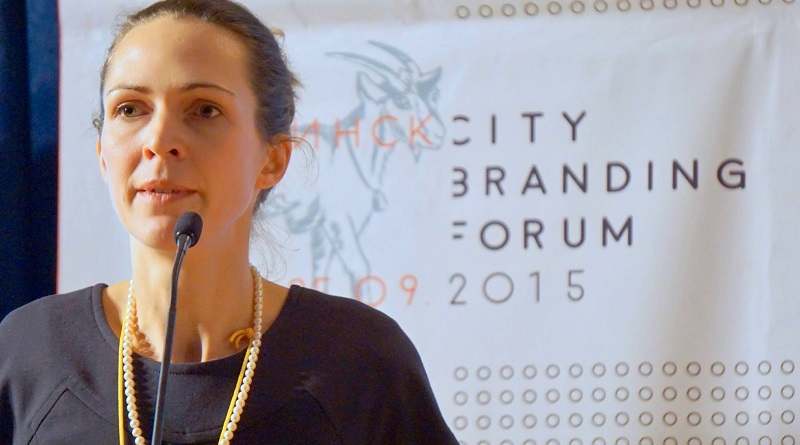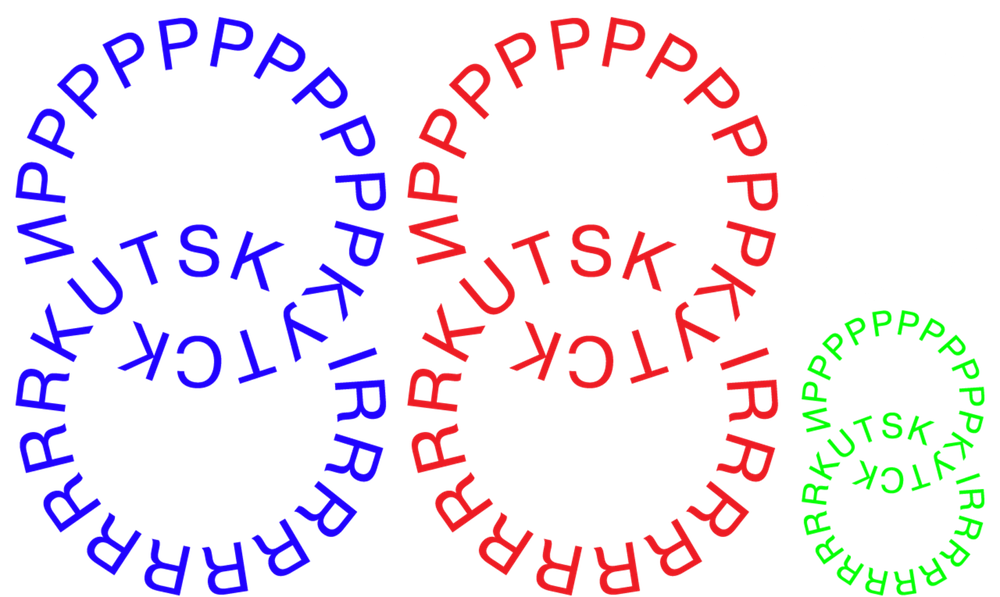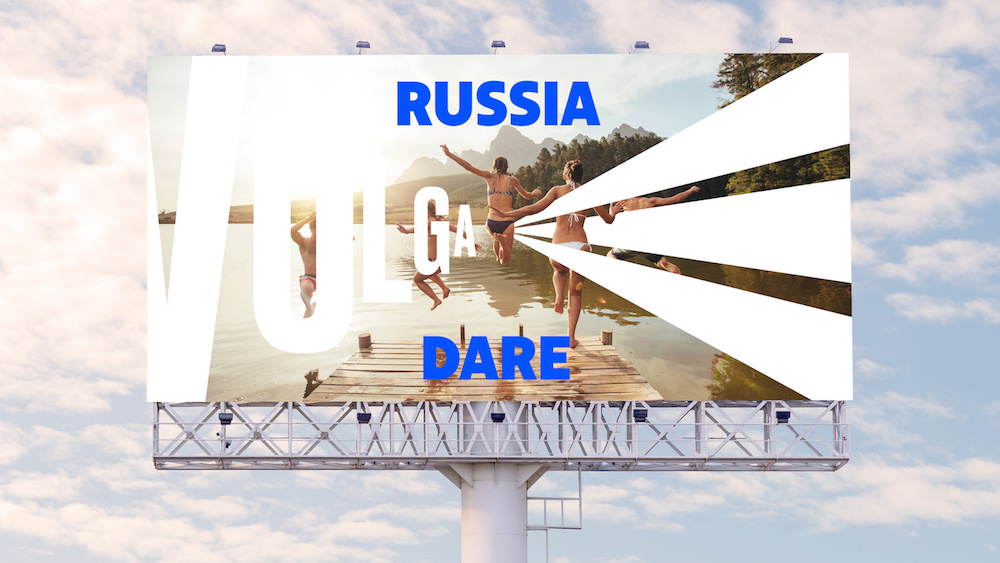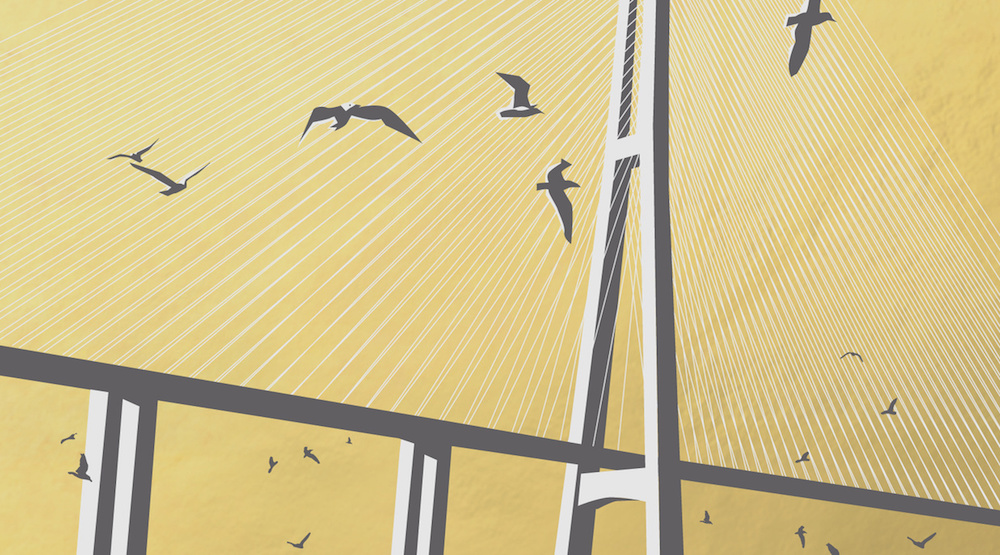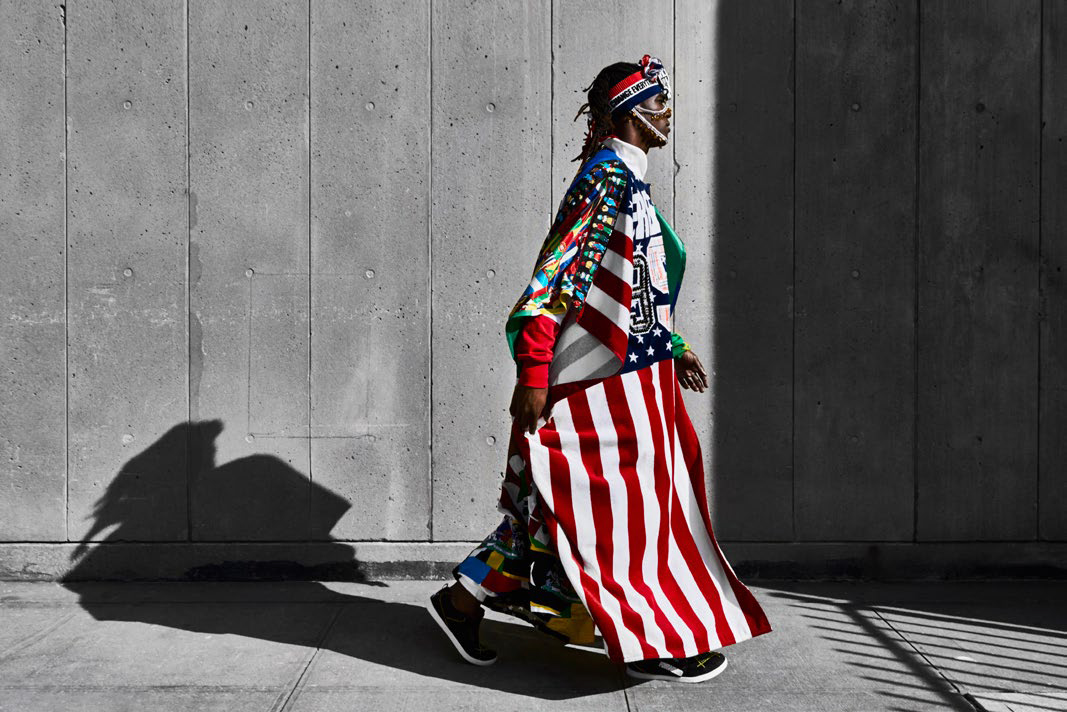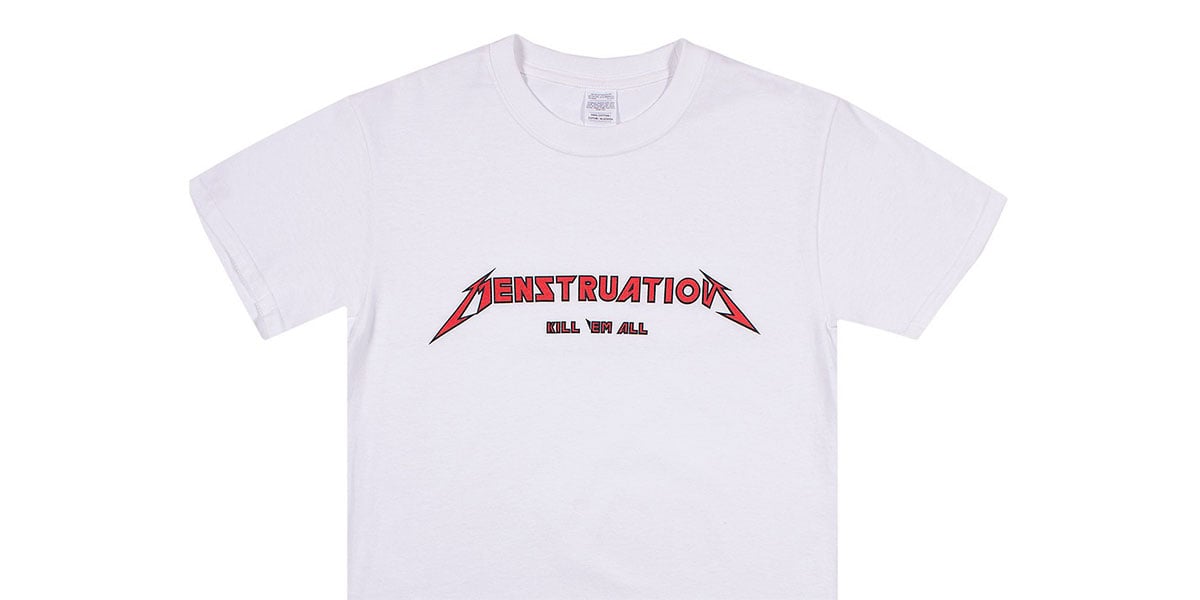Brand new: meet the design duo giving new identities to remote Russian cities

What comes to mind when you think of a provincial Russian city like Irkutsk? Nothing in particular? Never fear — “place branding” experts are replacing the former eastern bloc’s reputation for monotony with bold new designs and an innovative approach to local identity. Can branding help save the economies of provincial Russia?
Close your eyes and imagine New York. You hear the buzz of yellow taxi cabs and feel gusts of warm air billowing down high-rise city blocks. Police sirens sound. Sausages sizzle on roadside hot dog carts. Now try again for London. Imagine the chimes of Big Ben and the bumbling charm of a rom-com-fuelled Hugh Grant. An image — a feeling — is already in your mind, even if you’ve never seen the Statue of Liberty or stood on the windswept banks of the Thames. Each city has burned its own distinct identity into the global subconscious. People who have never been to Paris picture with ease the romance of the Eiffel Tower or the high culture of the Louvre.
But what happens when you try to imagine Irkutsk? Or Belgorod? What happens when the city you’re in fails to inspire anything at all — even for some of the people who live there?
That is where experts like INSTID — The Institute of Identity — step in. Founded by Natasha and Alex Grand, the company is at the forefront of a new wave of location branding: finding an identity for regions and cities and sending it out into the world. The pair’s business plan came to life in 2008, when Natasha, then working as a political risk advisor, became tired of seeing governments throw away resources on misguided campaigns to win foreign investment. While most PR pushes tried to highlight low corruption rates, Natasha thought it was time to showcase something else: countries’ personalities.
Now based between Moscow and London, the team specialise in helping towns across the New East “find themselves” — from conservative, law-abiding Lipetsk to seismic, rebellious Irkutsk.
“Identity has two sides or perspectives,” says Natasha. “On one hand, it’s about defining the uniqueness of a place, differentiating it. On the other hand, it’s a search for common ground. The goal is to make local people find out what they have in common and start defining themselves via a place.”
In many ways, the company’s work is a response to an increasingly international world. With the ability to travel cheaply and communicate with ease, if towns and cities want to attract investment, either from central government or foreign businesses, then they need to stand out from scores of competitors. For many, boosting outside cash flows is a question of economic survival. “Officials know they cannot do worse than their counterparts in other regions,” says Natasha. “Some want to do better than others, show leadership. Identity work puts the place onto a mental map, into people’s minds.”
This work is perhaps more important in the New East than elsewhere. After the fall of the Iron Curtain, the former eastern bloc nations laboured to free themselves of strong, largely negative socialist-era stereotypes. Place branding has allowed each country to reinvent a new image: from Croatia’s latest incarnation as a Mediterranean holiday destination to Estonia’s global image as an innovation hotspot.
In Russia, place branding is an antidote to the lingering homogeneity that dominated perceptions of the country under communism
“Place branding enabled [outsiders] to differentiate these places from each other as they were perceived as a one big ‘bloc’,” says Professor Magdalena Florek, a leading expert in place branding from Poznań University and a board member for the International Place Branding Association.
“Since the knowledge about these countries or cities was really limited, being ‘hidden’ or ‘surprising’ created big marketing potential. Thanks to branding efforts, they gradually attracted more and more tourists. At the same time, they have attracted many investors and other important international targets.”
In larger countries such as Russia, meanwhile, place branding is an antidote to the lingering homogeneity that dominated perceptions of the country under communism. While people in Britain or the United States may be able to tell the difference between someone from the north or south of the country from a few muttered words, regional differences in Russia are far more blurred. If you have trouble conjuring up images of the central Russian city of Ufa, then worry not: people in Moscow are struggling too. Place branding aims to empower some of these regional identities.
“Ultimately, our work is Russia is akin to colouring a grayscale map. The infrastructure and standards across Russian regions are fundamentally the same,” says Natasha. “Russia contains a whole wealth of traditions, ways of life, archetypal characters. However, they are not well known and defined. In most Russian regions, people struggle to have a clear sense of their own place’s personality, let alone those of their neighbours.”
Drawing out an area’s identity, however, is a long and work-intensive process. INSTID sit down and discuss their work with local residents of different ages and backgrounds. These are conversations which run for several hours, digging into the local way of life: unpicking residents’ attitudes to success, home, family, work, money, religion. Local students, business owners, craftsmen, historians, artists, psychologists, musicians and chefs are all targeted alongside other workers. Other key aspects include holding workshops, observing local artists and visiting local landmarks. The key, says Natasha, is immersing yourself into local culture, while still maintaining the objective lens of an outsider.
As a general rule, the larger the city, the more abstract the ideas behind its regional identity
“More often that not, the place where we start our project does not mean much to its residents,” she says. “They rather define themselves through their profession, family, interests, lifestyle brands, and direct their attention and money respectively. The place is just an infrastructure, somewhere where they happen to be.”
Although the cities where INSTID work tend to have upwards of a million residents, Natasha says that the research methods remains largely the same. The defining aspect is what draws people together. As a general rule, the larger the city, the more abstract the ideas behind its regional identity. While villages can be brought together by tangible things, such as landmarks, nations and metropolises are held together by values. People in Minsk pride themselves on intellect and logical thinking. Residents in the Russian region of Bashkortostan prize calm, measured, work, while neighbouring Tatarstan prefers ambition, drive and strength.
It’s these values that INSTID uses to create mockups of potential posters, typefaces and souvenirs. In the Siberian city Irkutsk, for example, the team looked to instill a sense of energy; the pioneering spirit they felt residents used to survive in this harsh corner of the world. With its bright neon colours and letters spiralling across the page, the design pushes boundaries, just like the people of Irkutsk themselves.
“The idea behind the brand is one of rebellion, of pushing boundaries and challenging yourself,” says Grand, who spent time in the city carrying out interviews and meeting local people. “This is the way of life in Irkutsk. The brand manifesto and the visual style are intended to energise, activate people, give them the impetus to accomplish difficult tasks: be it making the journey to this far-off city, or invigorating city culture and life itself. This is not a cosy or comfortable visual style. Something like that would not be true to Irkutsk.”
The campaigns certainly get noticed. (After Tatarstan announced its rebrand, the neighbouring region of Bashkortostan also called INSTID for help.) But while officials might be keen to show off their cities to the world, does a slick rebrand run the risk of being just a political publicity stunt?
“Rebranding is a natural consequence of the changing circumstances. Unfortunately it often takes place as a result of political changes,” says Florek. While political support for a city rebrand is vital, these short-term changes often lead to the creation of a superficial stunt rather than an in-depth look at a city’s identity. Experts say its this lack of commitment that stands in the way of successful campaigns. “In Poland for example, where I come from, it is quite common that after the next elections, new authorities will want to immediately change the direction of branding,” says Florek. “Local managers and others involved in place branding often perceive such ‘artificial’ rebranding as a serious barrier in their work.”
“Branding is not a collection of tricks and stories. It will only work if it is reflected in the reality and if people take part in this process”
While a new logo or visual might give a city a short-term boost, consultants maintain that it’s long-term identity work which can have a real impact on a city. Natasha says that successful identity campaigns can help locals and governments change for the better, with the most dramatic post-rebrand changes in the attitudes of residents themselves. In her words, identity branding helps residents see themselves within a bigger structure.
This newfound local pride can also have a strong knock-on effect. If people see their local city in a more positive light, then they’re more likely to stick around, neutralising at least some of a country’s ongoing brain drain. If young people can’t see a future for themselves in their hometown, INSTID would try to provide that inspiration, reassuring residents and providing a spark of imagination as to what the city could grow to be. Some businesses also begin to take INSTID’s values to heart. In one example, Tatarstan’s Kamaz truck manufacturer even adopted the Grands’ concept of the region’s strength to describe its own products.
While a rebranding campaign might provide an initial spark, however, ultimately it’s up to local officials to keep up the momentum. Location branding is a relatively young field, and there’s no substantive research on its long term effects, but if regional problems remain unfixed and ignored by those in power, it’s easy to imagine that even a clever branding campaign would fall flat.
“Branding is not a collection of tricks and stories,” says Florek. “It will only work if it is reflected in the reality and if people take part in this process.”
In an ideal world, branding experts say each city would have a dedicated identity centre to educate regional businesses and keep local values truly alive, allowing the city’s identity to evolve with the city itself. Rapidly-transforming New East cities will need to keep rebranding in order to capture their new selves. But this kind of long-term investment is a difficult sell. “[In Russia] governmental initiatives that do not result in quick and tangible outcomes, such as a new road, or a new hospital, are treated by the public with much suspicion,” says Natasha.
“To nurture the national identity of Russia as a whole, one must recognise the different traditions that contribute to the Russian culture,” she concludes. “When we start hearing jokes about people from Krasnodar versus people from Lipetsk, we will know our work is done.”
